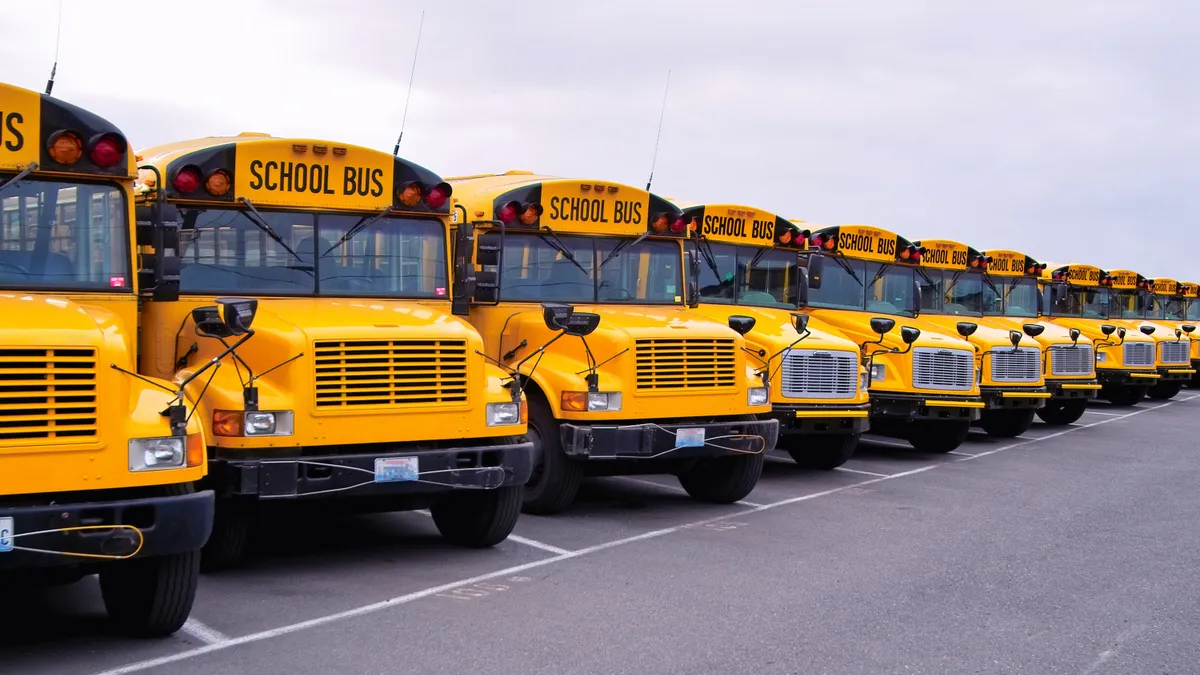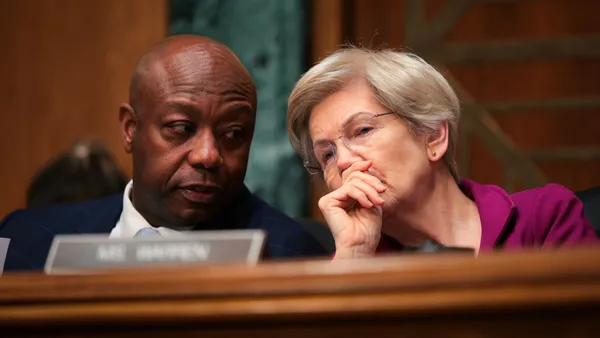Dive Brief:
- The Environmental Protection Agency last week released new emissions rules that will apply to school buses.
- The new standards published Friday will mean cleaner air and healthier communities, especially in corridors where there’s denser truck traffic, proponents said. The agency called them the strongest emission standards ever issued for heavy-duty vehicles like buses and freight trucks.
- The rule also means fleets will save “money through reduced fuel and maintenance costs,” EPA Administrator Michael Regan said on a press call Thursday.
Dive Insight:
EPA has provided various funding opportunities over the years to help school districts purchase low- and zero-emission school buses, for instance through the agency’s Clean School Bus Program — a $5 billion, five-year grant program that came out of the 2021 Bipartisan Infrastructure Law.
Before that, the EPA ran the National Clean Diesel Rebate Program to replace or retrofit buses between 2012 and 2017. A study published in 2023 in the journal Nature Sustainability also found the EPA’s $27.3 million lottery funding system to replace or update older school buses added over 350,000 days of student attendance within the program’s five-year span.
Researchers explained that exposure to school bus diesel exhaust can subject students to pollutants, which can consequently increase the likelihood of asthma attacks and school absences.
The final rule slows down the timing of the regulatory rollout compared to an initial unveiling. While the agency will track progress of original equipment manufacturers and developing infrastructure needed to support the program, regulations could undergo further changes based on feedback from the public.
“EPA will consult with a wide range of stakeholders on an ongoing basis to learn from their experiences and gather relevant information and data,” the agency said in a news release, adding that stakeholders will include state and local governments, heavy-duty vehicle manufacturers, environmental and public health groups, and more.
Nearly a year ago, the agency released a proposed rule that called for original equipment manufacturers to have increasingly higher amounts of zero-emission vehicles built. The agency sought that phased-in approach to address potential lead time concerns over the feasibility of ramping up the newer technology, the proposed rule said.
More than 175,000 comments poured in on the proposed rule, with concerns highlighting issues such as the still developing charging infrastructure.















